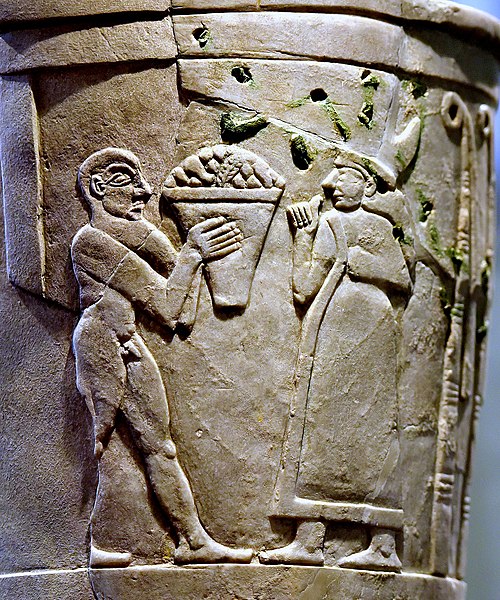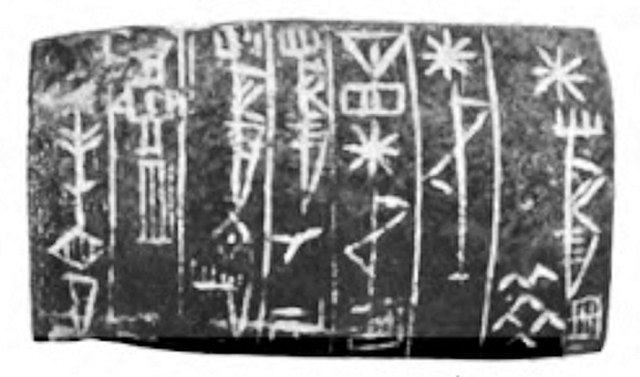Inanna is the ancient Mesopotamian goddess of love, war, and fertility. She is also associated with sensuality, procreation, divine law, and political power. Originally worshiped in Sumer, she was known by the Akkadian Empire, Babylonians, and Assyrians as Ishtar. Her primary title was "the Queen of Heaven".
Goddess Ishtar on an Akkadian Empire seal, 2350–2150 BCE. She is equipped with weapons on her back, has a horned helmet, places her foot in a dominant posture upon a lion secured by a leash and is accompanied by the star of Shamash.
Inanna receiving offerings on the Uruk Vase, circa 3200–3000 BCE
The Uruk Vase (Warka Vase), depicting votive offerings to Inanna (3200–3000 BCE).
Tablet of Lugal-kisalsi
Sumer is the earliest known civilization, located in the historical region of southern Mesopotamia, emerging during the Chalcolithic and early Bronze Ages between the sixth and fifth millennium BC. Like nearby Elam, it is one of the cradles of civilization, along with Egypt, the Indus Valley, the Erligang culture of the Yellow River valley, Caral-Supe, and Mesoamerica. Living along the valleys of the Tigris and Euphrates rivers, Sumerian farmers grew an abundance of grain and other crops, a surplus which enabled them to form urban settlements. The world's earliest known texts come from the Sumerian cities of Uruk and Jemdet Nasr, and date to between c. 3350 – c. 2500 BC, following a period of proto-writing c. 4000 – c. 2500 BC.
The Blau Monuments combine proto-cuneiform characters and illustrations of early Sumerians, Jemdet Nasr period, 3100–2700 BC. British Museum.
Enthroned Sumerian king of Ur, possibly Ur-Pabilsag, with attendants. Standard of Ur, c. 2600 BC.
Portrait of a Sumerian prisoner on a victory stele of Sargon of Akkad, c. 2300 BC. The hairstyle of the prisoners (curly hair on top and short hair on the sides) is characteristic of Sumerians, as also seen on the Standard of Ur. Louvre Museum.
A pottery jar from the Late Ubaid Period








